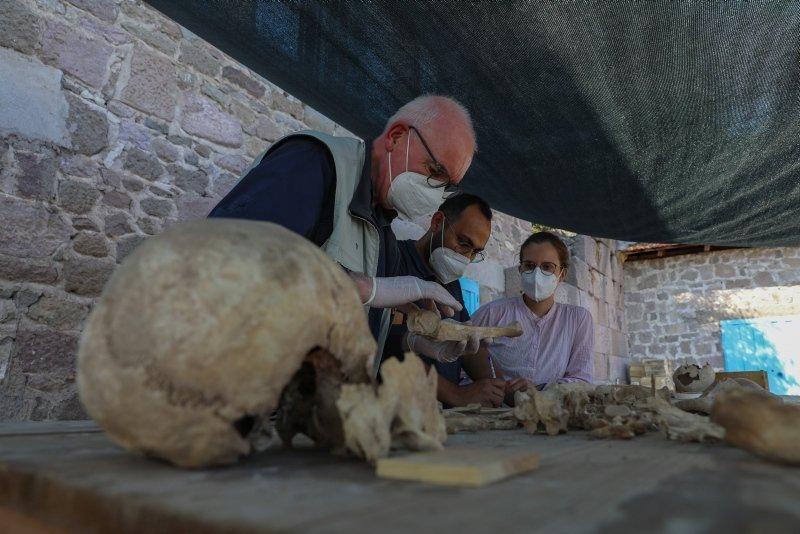
Skeletons examined by Turkish and German scientists in the ancient city of Bergama revealed that people living in the region 2,000 years ago mainly ate carbohydrates and plants, while the wealthy consumed more meat.
The studies also revealed that people of the region suffered dental problems and sinus diseases the most.
Scientists of the German Archaeological Institute, Celal Bayar University, Berlin Technical University and Munich Ludwig Maximilians University are working in the ancient city of Bergama on the UNESCO World Heritage List.
The international articles of Professor Wolf Rüdiger Teegen, a specialist in Prehistoric Protohistory and Roman Archaeology at Munich Ludwig Maximilians University who studied the skeletons unearthed in two necropolises in the ancient city, also known as Pergamon, provide clues about the dietary habits and diseases of the ancient people.
Teegen said that he has been in Bergama for about 11 years working on fossil and bone remains. Stating that they made studies on 300 skeletons and bone remains in the region, Teegen said that their work also covered the Roman and Byzantine periods.
Stating that they focused primarily on “sex” and “age” in their studies, Teegen said, “It is impossible to determine gender in some skeletons. Age determination is much more possible. We see a typical age distribution. This is also true for Roman and Hellenistic times. People’s ages are between 20 and 40 years. The death rate is lower at older ages. Especially the age of death of women is below 40 due to reasons such as pregnancy and childbirth.”
Wide spectrum of diseases
Noting that they rarely see causes of death other than hard blows, Teegen said that some diseases that progress with symptoms such as fever or diarrhea do not leave any traces on the skeleton.
Stating that there is a wide spectrum of diseases, Teegen said:
“Problems such as tartar, apse and tooth loss, which we see most frequently during the studies, still exist today. These diseases also played an important role in childhood and youth. We also focus specifically on the skull. For instance, sinuses. This was partly due to the hearth fire used for heating at that time. This was not good for health. Due to insufficient heating during the winter months, arthritis and joint inflammations were also seen.”
Stating that they also benefited from the teeth to understand the nutritional habits of the period, Teegen said, “We see that a carbohydrate-rich diet was common like bread and porridge.”
Teegen stated that carbon and nitrogen examinations in the laboratory revealed that many people had a plant-based diet.
“A certain percentage of the population could eat meat regularly. The number of people who ate a lot of meat was low because meat-eating varied depending on people’s social status. Those who had money were able to eat meat or fish. We know that beef was cheaper than pork, as pork was very popular during the Roman Empire. The most expensive meat was rabbit meat at that time,” he said.